Mason bee systems - different styles, good and bad
magala
14 years ago
Featured Answer
Sort by:Oldest
Comments (50)
ilovebee
14 years agolast modified: 9 years agoRelated Discussions
Mason Bee Sources...
Comments (10)There are two recognized subspecies of orchard mason bees (OMB, AKA blue orchard bees) that live in the eastern and western parts of North America. The eastern subspecies is called Osmia lignaria lignaria, the western subspecies is Osmia lignaria propinqua. They have distinct differences in behavior and even some slight differences in appearance. The main difference, as far as importance to you as a consumer of pollination services, is that the western subspecies is poorly adapted to eastern climate, especially humid conditions in spring and summer. The experience that most people have when they attempt to import western bees for use in the east (that's you!)is that the bees survive poorly year to year. Anecdotally, most female western OMB tend to migrate away from their emergence location, in search of lower humidity. OMB is native over a huge area of North America, and reasonably common where there is adequate climate and suitable vegetation. Reportedly, they tend to prefer spring-blooming plants in the rose family. You can get alot of specific information about these bees from Pollinator Paradise (www.pollinatorparadise.com) or the USDA Bee Biology Lab in Logan, Utah (http://www.loganbeelab.usu.edu/). Scientists at this USDA lab have pioneered work on this species of pollinator. You might be able to get adequate service from western OMB during a single season, maybe more. If you could find a source of eastern OMB, that would be better. Some of the vendors that have tried to sell eastern OMB's have not been successful, in part because most people nationwide buy bees from western sources (e.g Knox Cellars or Raintree). You could also start your own colony of eastern OMB by trapping them from a local wild source, but that might require a little more expertise and time than you currently have available. You might also want to try using hornfaced bees, Osmia cornifrons. These are similar to OMB, readily available from mason bee suppliers, and probably easier to use and propagate in the eastern part of the continent. The last time that I checked, there were a few sources of eastern OMB. Some may no longer be selling in 2005. Mr. Raymond D. Williams P. O. Box 1943 116 Sanitaria Springs Road Binghamton, NY 13902-1943 (607)775-3369, rdwbmg@juno.com Orchard Bees [ending business 2004] Greg Dickman 4391 County Rd. 35 Auburn, IN 46706-9794 260 925-5076 website: www.orchardbees.com [not valid on 26.02.2004] e-mail: buzzin@ctlnet.com Nancy A. Troup 10618 Honeyfield Road Williamsport, MD 21795 301-223-9662 beestroup@erols.com Duane E. King northern Maryland e-mail: king@mail.bcpl.lib.md.us web: http://www.bcpl.net/~clayton/bee.html Here is a link that might be useful: good article on...See MoreMason Bees
Comments (8)If you have blooming plants outside, you'll bring in Mason or Orchard bees. It may take a while for them to discover your bee house. There are native types in this area so there is no need to import any from another state, just encourage the wild ones. I haven't seen any so far this year, but I have seen plenty of honeybees. Keep in mind that most of the Mason and Orchard bees are tiny, the size of a housefly. Also keep in mind that you will eventually have to manage them and their bee house. The mite infestations get so bad after a year or so that you'll need to clean the cocoons while they sleep through the winter to get rid of them. Otherwise the mites and pests weaken the bees and your house will be empty....See MoreAnt condos... bad, good or no difference to conifers?
Comments (6)First of all, out of the hundreds of plants I've put into the ground the last six months, only about a dozen or so specimens have condos so far. That said, maybe ants expand like people and I could have a full fledge megatropolis soon. I know the cats enjoy them and they aren't dangerous or agressive stinging types. I am curious what is going to happen to them on a rainy day - or perhaps they know it's now the dry season. I will be completely against any kind of pesticides or other people created chemicals until I begin to lose plants. My garden is full of frogs, dragonflies, bees and butterflies and I'd prefer not to risk killing some of the other beneficial types of insects. I am for sure not worried about some of my more established specimens. They are thick underneath a specimen of Pinus contorta 'Taylors Sunburst' that I've had for a couple years. I just worry that some of the other new little guys I've planted won't be able to retain enough moisture with the ground being so porous. Here's a couple photos....See MoreMason/Orchard Bees - any experience? Sources for bees?
Comments (9)If you spray for carpenter bees, you will kill all the native mason bees you attract to your nesting spaces! So that is something huge to consider. If you have an out building that you do not spray, that might be a consideration - however you will probably still kill off that population. Now is the time to work on changing over your carpenter bee habits. Fill each hole with diatomaceous earth or borax. Then take a dowel and plug each hole up. That will stop new bees from emerging. Spraying in the holes will not totally eliminate the baby bees in there, only the first. There will be several in each hole. After you do that, then you can put up the bee houses for your carpenter bees. It really does work wonderfully well. Each fall, just take your Carpenter Bee houses down and clean out the tubes and kill the baby bees inside if you don't want them. Wash them well to remove bee fermones. Hang them again for next year. It's the existing fermones of baby bees that attract the new adult bees (and the babies also come back as adults) to lay more babies in your house. I had some good luck keeping the bees out by simply regularly washing my home and stopping up bee holes, and removing all mud dauber tubes (after hatching) and using this method for carpenter bees. We did get a lot of them when I moved here....See Moreknsdye
14 years agolast modified: 9 years agoilovebee
14 years agolast modified: 9 years agogyozu
14 years agolast modified: 9 years agogordonhutchings
14 years agolast modified: 9 years agoprairiemoon2 z6b MA
14 years agolast modified: 9 years agogordonhutchings
14 years agolast modified: 9 years agomagala
14 years agolast modified: 9 years agoprairiemoon2 z6b MA
14 years agolast modified: 9 years agogordonhutchings
14 years agolast modified: 9 years agoilovebee
14 years agolast modified: 9 years agomagala
14 years agolast modified: 9 years agoilovebee
14 years agolast modified: 9 years agotcstoehr
14 years agolast modified: 9 years agomagala
14 years agolast modified: 9 years agogyozu
14 years agolast modified: 9 years agotcannard
13 years agolast modified: 9 years agomagala
13 years agolast modified: 9 years agotcannard
13 years agolast modified: 9 years agoilovebee
13 years agolast modified: 9 years agotcannard
13 years agolast modified: 9 years agoilovebee
13 years agolast modified: 9 years agotcannard
13 years agolast modified: 9 years agoilovebee
13 years agolast modified: 9 years agocannard_att_net
13 years agolast modified: 9 years agomkaug
12 years agolast modified: 9 years agoiammarcus
12 years agolast modified: 9 years agoJudith234
12 years agolast modified: 9 years agorandyperson
12 years agolast modified: 9 years agoJudith234
12 years agolast modified: 9 years agorandyperson
12 years agolast modified: 9 years agojonp84
12 years agolast modified: 9 years agomkaug
11 years agolast modified: 9 years agowisteria-tx
11 years agolast modified: 9 years agoCharlie
11 years agolast modified: 9 years agowaiting_gw
11 years agolast modified: 9 years agoltilton
9 years agolast modified: 9 years agomagala
9 years agolast modified: 9 years agoltilton
9 years agolast modified: 9 years agolazy_gardens
9 years agolast modified: 9 years agoLongtom
9 years agolast modified: 9 years agolynea102
8 years agoChad Charles
7 years agogartleyideas
7 years agogartleyideas
7 years agolast modified: 7 years agosam_md
4 years agoprairiemoon2 z6b MA
4 years agoubro
4 years agosam_md
4 years ago
Related Stories
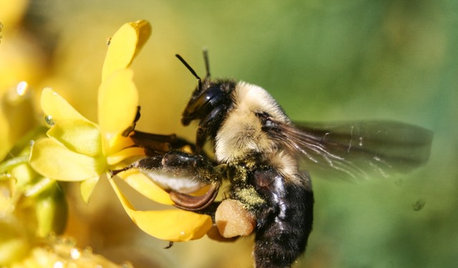
GARDENING FOR BUTTERFLIESGardening for the Bees, and Why It’s a Good Thing
When you discover how hard bees work for our food supply, you may never garden without them in mind again
Full Story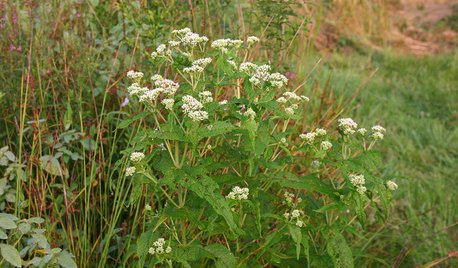
GARDENING GUIDESGreat Design Plant: Common Boneset Helps Good Bugs Thrive
Support bees, moths and butterflies with the nectar of this low-maintenance, versatile and tactile prairie-style plant
Full Story
GARDENING AND LANDSCAPINGBid Bad Garden Bugs Goodbye and Usher In the Good
Give ants their marching orders and send mosquitoes moseying, while creating a garden that draws pollinators and helpful eaters
Full Story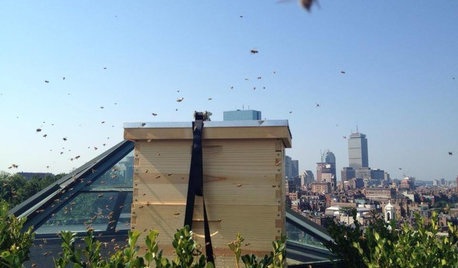
FARM YOUR YARDHello, Honey: Beekeeping Anywhere for Fun, Food and Good Deeds
We need pollinators, and they increasingly need us too. Here, why and how to be a bee friend
Full Story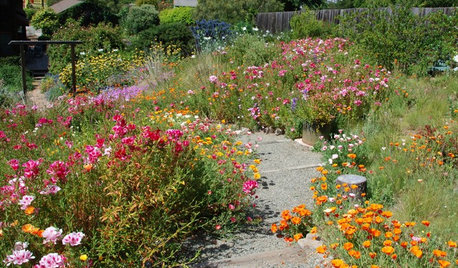
EARTH DAYHow to Design a Garden for Native Bees
Create a garden that not only looks beautiful but also nurtures native bees — and helps other wildlife in the process
Full Story
DECORATING GUIDESSingle Design Moves That Make All the Difference
One good turn deserves a whole ideabook — check out these exceptional lone moves that make the room
Full Story
ROOTS OF STYLEArt Deco, Art Nouveau, Arts and Crafts: What’s the Difference?
If the zigzag and swirly designs of the past leave your head spinning, these descriptions will straighten you right out
Full Story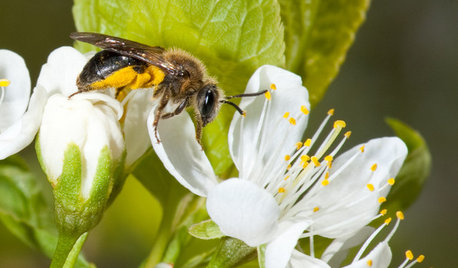
GARDENING GUIDESInvite Mining Bees to Your Garden by Planting Their Favorite Plants
Look for mining bees (Andrena) pollinating woodland wildflowers in U.S. gardens this spring
Full Story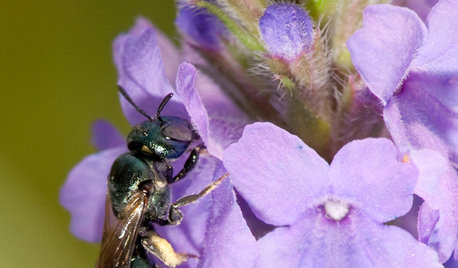
GARDENING GUIDESSmall Carpenter Bees Are Looking for a Home in Your Plant Stems
Provide flowers and nesting sites in your garden for this beautiful, tiny, metallic blue wild bee — your plants will thank you
Full Story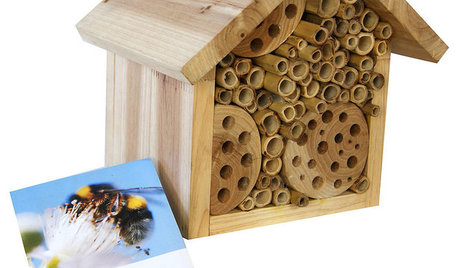
PRODUCT PICKSGuest Picks: 20 Ways to Play Garden Host to Birds and Bees
Perch some of these houses and feeders around your garden, and watch pollinators and feathered friends flock in
Full StorySponsored



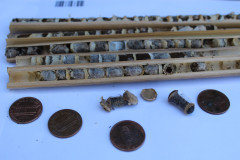

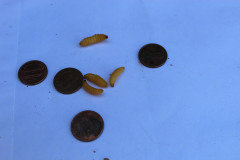

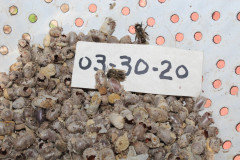
gordhutchings